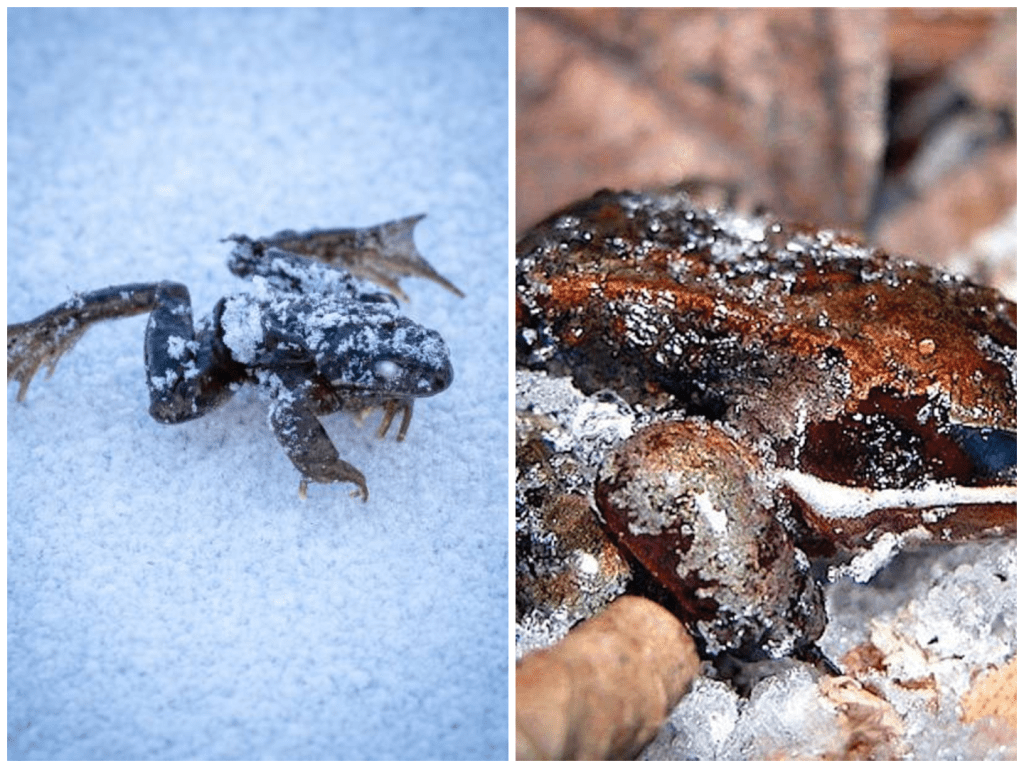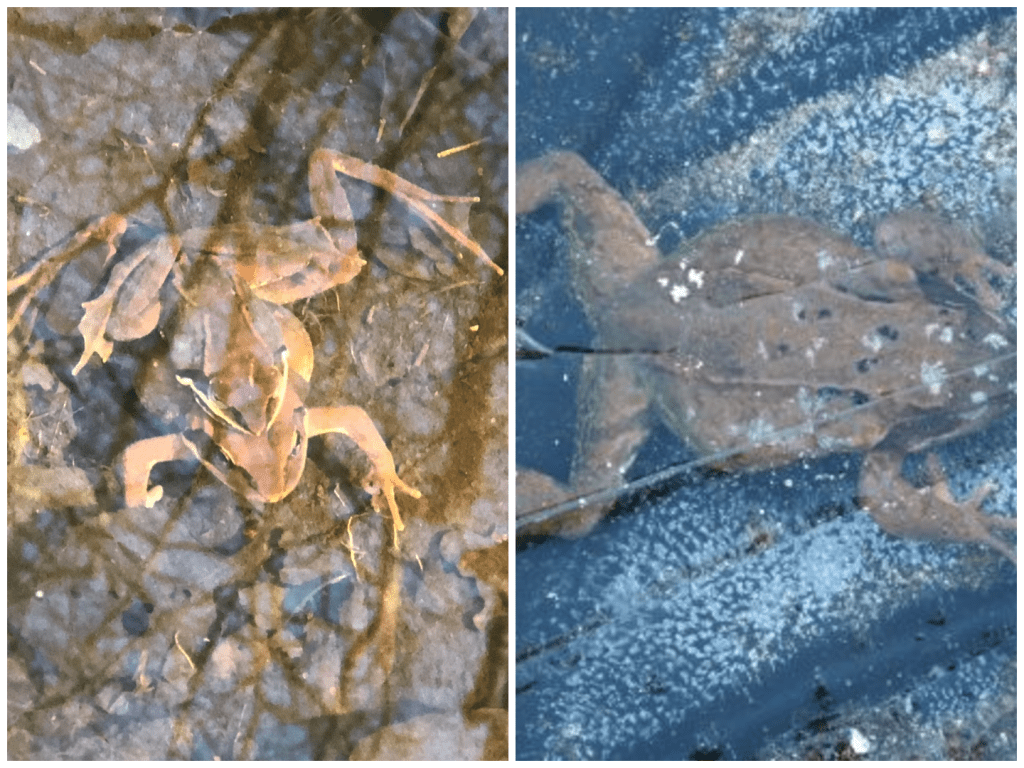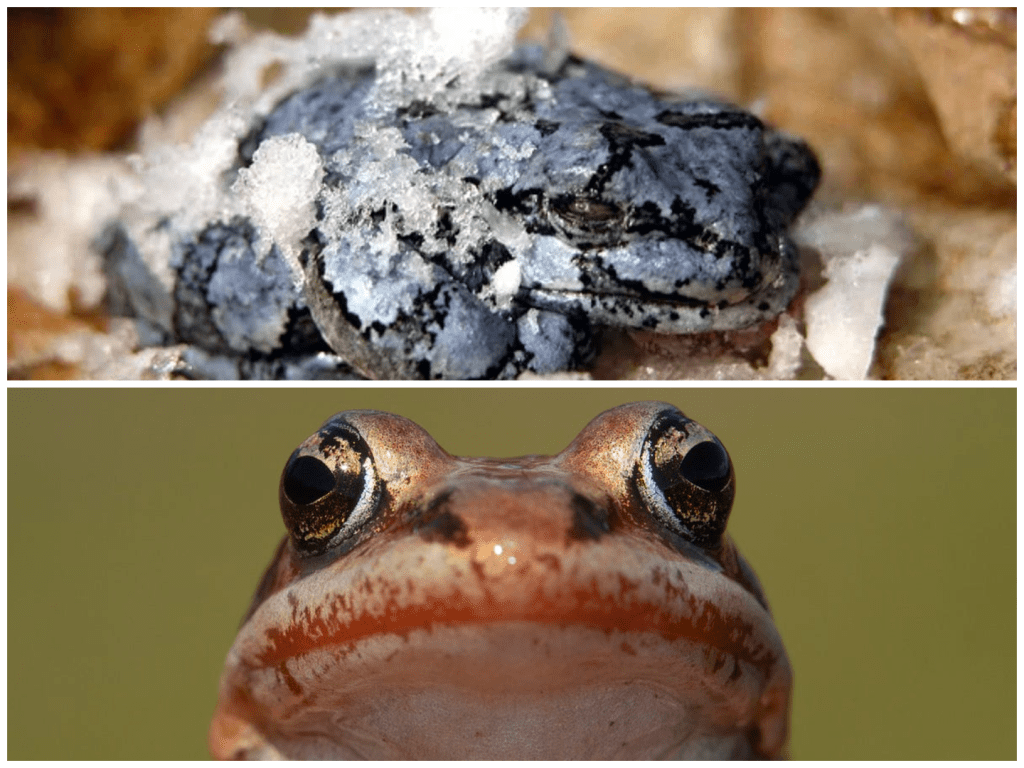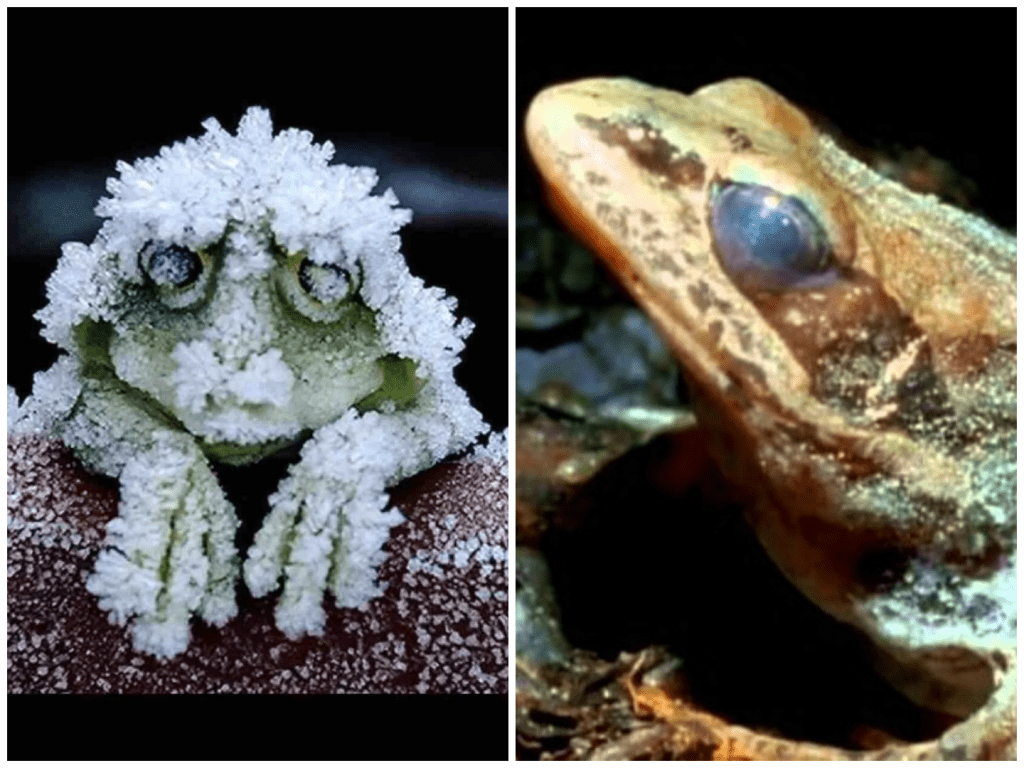The Alaskan Wood Frog Literally Freezes Solid With No Heartbeat All Winter—Then Comes Back to Life Like Nothing Happened

There’s something deeply humbling about nature—how it writes rules that feel impossible, yet plays by them every year like clockwork. And maybe nowhere is that more jaw-droppingly true than in the icy forests of Alaska, where a tiny, unassuming creature spends months in what looks like a silent, frozen death… and then wakes up like nothing ever happened.
Meet the Alaskan wood frog. Officially known as Lithobates sylvaticus, this amphibian is smaller than the palm of your hand, covered in earthy brown skin with little black markings, and on the surface, it looks like just another cold-climate frog trying to survive winter. But what this creature does to stay alive during the frozen months of the Alaskan wilderness is nothing short of science fiction.
From late autumn through early spring, when temperatures regularly plummet below zero, the Alaskan wood frog doesn’t migrate. It doesn’t hibernate in the classic sense either. Instead, it does something we still struggle to wrap our heads around: it freezes. Completely. And not in the way a person might say they “froze” walking to the car on a cold day—this frog literally freezes solid. No breathing. No heartbeat. No brain activity. No blood flow. It just stops. Like a rock, encased in ice.

Scientists have studied this behavior for years, and every time the findings are published, it stirs up the same wave of fascination. When the Alaskan wood frog begins to feel the chill of early frost, it seeks out leaves, moss, or the shallow ground cover of the forest floor. There, it begins preparing for its deep freeze by doing something brilliant—it floods its tissues with glucose. That sugar acts like antifreeze inside its body. Not all of its water freezes, which protects its cells from bursting like a bottle of soda in the freezer. The frog’s organs, coated in this sugary shield, can withstand being ice-cold for months. And then… it just goes silent.
Imagine holding a tiny animal in your hand that’s not breathing, has no pulse, no sign of life. It’s cold, stiff, its eyes are glazed over. And yet, it’s not dead. It’s just… waiting.
For the better part of seven months, this creature remains like that—frozen in place beneath snow and ice while the world above it howls with winter storms. And then, one spring morning, something extraordinary happens. As the forest begins to thaw, so does the frog. Bit by bit, its icy body softens. The glucose does its job again, protecting its organs as warmth creeps in. The heart begins to beat. The lungs fill with air. Brain activity returns. And the frog opens its eyes. Within hours, it’s hopping through the underbrush again, as if it hadn’t just survived the biological equivalent of death.
You’d think something this bizarre would be a recent discovery or some fringe biological footnote, but researchers have been studying it for years. Scientists at the University of Alaska Fairbanks have been tracking the frogs’ glucose levels, freeze-thaw cycles, and metabolic responses since the early 2000s. In fact, the wood frog is one of the only amphibians known to survive freezing in its natural habitat at such high latitudes. It’s not a lab trick. This is real life. Every year.

The deeper you dive into it, the more incredible it gets. At peak winter, nearly two-thirds of the frog’s body water becomes ice. Its heart doesn’t beat. Its blood stops. It’s technically clinically dead—by our standards. And yet, thanks to that glucose surge and its evolved resistance to freezing damage, the frog survives what would kill almost any other vertebrate. When the spring thaw arrives, it starts back up like someone flicked a switch.
But it’s not just fascinating from a scientific point of view. There’s something oddly emotional about it too. Something poetic. In a world where we’re constantly talking about human survival, from climate change to space travel, this tiny frog quietly rewrites the script. It teaches us that sometimes, survival isn’t about fighting the elements—it’s about adapting in ways we never thought possible. Not everything needs brute strength. Sometimes, nature’s softest creatures are the toughest ones out there.
And the implications for science and medicine? They’re enormous. If a frog can shut down its entire body, preserve its brain, and then restart months later with zero damage, what does that mean for organ preservation? For long-term space travel? For understanding comas, suspended animation, or cryogenics? Researchers are asking those questions now. Some studies are already looking into whether the same sugar-glucose strategy could be used to preserve human organs longer for transplants, or even in developing treatments for traumatic hypothermia.
The Alaskan wood frog isn’t just a curiosity. It’s a doorway into something bigger.
And of course, the internet has fallen in love with it too. Social media clips of the frog “coming back to life” in the spring go viral every year, sparking thousands of comments like “this is real-life magic” or “nature’s Lazarus.” Kids are learning about it in school. Nature documentaries are covering it with dramatic music and slow-motion thaw footage. People are fascinated, and honestly, how could they not be? In a world that often feels chaotic and uncertain, something about a tiny frozen frog quietly reminding us that life finds a way is strangely comforting.
If you ever find yourself walking through a forest in Alaska during early spring, pay attention to the ground. Beneath the leaves, you might be walking past dozens of frogs who just a few days ago had no heartbeat. No breath. No warmth. And yet they’re awake again, blinking, moving, living proof that even in the coldest, darkest winters, life doesn’t always give up. Sometimes it just waits.
And when the time is right, it hops back into the world like nothing ever happened.



